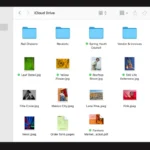Setting up a Plex media server with automatic torrenting can transform your home entertainment experience. You can create a personal Netflix-like streaming service that automatically adds new content without manual intervention. This setup combines the power of Plex’s media organization with the efficiency of automated downloading.
Plex serves as the central hub for your media library, while auto-torrenting tools like Sonarr and Radarr handle content acquisition. These apps work together to search for, download, and organize your favorite TV shows and movies. With the right configuration, you’ll have a system that keeps your media collection fresh and accessible across all your devices.
To get started, you’ll need to set up a Plex server and configure torrent automation tools. While the initial setup requires some technical knowledge, the long-term benefits are substantial. You’ll enjoy a constantly updated media library without the hassle of manual downloads and file management.
| Component | Purpose |
|---|---|
| Plex | Media server and player |
| Sonarr | TV show automation |
| Radarr | Movie automation |
| Torrent client | Downloads media files |
| VPN | Protects privacy during torrenting |
Setting Up Your Media Server Environment
Preparing your media server environment involves installing essential software and configuring network settings. These steps lay the groundwork for a secure and efficient Plex setup with automated media acquisition.
Installing Docker and Docker Compose
Docker simplifies the deployment of Plex and related services. To install Docker on Linux:
-
Update your package list:
sudo apt update -
Install Docker:
sudo apt install docker.io -
Add your user to the docker group:
sudo usermod -aG docker $USER
Next, install Docker Compose:
-
Download the latest version:
sudo curl -L "https://github.com/docker/compose/releases/download/1.29.2/docker-compose-$(uname -s)-$(uname -m)" -o /usr/local/bin/docker-compose -
Apply executable permissions:
sudo chmod +x /usr/local/bin/docker-compose
Create a docker-compose.yml file in your project directory. This file will define your Plex stack services.
Securing Access and Establishing Network Parameters
Proper network configuration ensures your Plex server remains secure. Start by setting up a reverse proxy with Nginx:
-
Create an Nginx container in your docker-compose.yml:
nginx: image: nginx:latest ports: - "80:80" - "443:443" volumes: - ./nginx.conf:/etc/nginx/nginx.conf -
Configure SSL certificates for HTTPS.
Set up firewall rules to protect your server:
sudo ufw allow 32400/tcp
sudo ufw enable
This opens Plex’s default port while blocking unnecessary traffic.
Use a VPN for anonymous torrenting. Add a VPN container to your docker-compose.yml and route your download clients through it.
| Service | Port | Protocol |
|---|---|---|
| Plex | 32400 | TCP |
| Nginx | 80 | TCP |
| Nginx | 443 | TCP |
| VPN | 1194 | UDP |
These settings create a solid foundation for your Plex media server environment.
Configuring Automated Media Download Tools
Automated tools streamline the process of acquiring and managing media for your Plex server. These tools handle searching, downloading, and organizing content with minimal user input.
Setting Up Torrent Clients and Indexers
Choose a torrent client like qBittorrent or uTorrent to handle downloads. Install your preferred client and configure its settings for optimal performance.
Next, set up indexers to search for content. Indexers act as search engines for torrents. Add reliable indexer sites to your download client.
Create separate download folders for movies, TV shows, and music. This helps organize content before it moves to your media library.
Enable RSS feeds in your torrent client. These feeds automatically check for new releases based on your preferences.
| Torrent Client | Pros | Cons |
|---|---|---|
| qBittorrent | Open-source, lightweight | Less user-friendly interface |
| uTorrent | Feature-rich, popular | Ad-supported |
Integrating Sonarr, Radarr, and Lidarr for Media Management
Install Sonarr for TV shows, Radarr for movies, and Lidarr for music. These tools automate the process of searching for and downloading media.
Configure each application to work with your torrent client and indexers. Set up quality profiles to ensure you get the desired file types and sizes.
Create media libraries in each application. Point them to your designated folders for movies, TV shows, and music.
Set up release profiles to fine-tune your content preferences. This helps filter out unwanted releases and prioritize preferred ones.
Enable automatic import in each application. This moves downloaded files to your media folders and renames them according to your settings.
Adding Ombi or Overseeer for User Requests
Install Ombi or Overseerr to allow users to request new content for your Plex server. Both tools provide a user-friendly interface for submitting and managing requests.
Connect your chosen request tool to Sonarr, Radarr, and Lidarr. This integration allows for automatic approval and download of requested content.
Set up user accounts and permissions in the request tool. You can control who can make requests and set limits on the number of requests per user.
Configure notification settings to alert you of new requests. This helps you stay on top of user activity and manage your server more effectively.
Integrating Plex Media Server
Plex Media Server forms the backbone of your automated media setup. It organizes and streams your content across devices.
Configuring Plex Media Server on Docker
Setting up Plex Media Server in a Docker container offers flexibility and easy management. Start by pulling the official Plex image from Docker Hub. Create a new container with the following key settings:
- Map your media folders to the container
- Set the correct timezone
- Expose necessary ports (32400 for web interface)
Use this command to launch your Plex container:
docker run -d --name=plex --net=host -e TZ="Your/Timezone" -v /path/to/library:/config -v /path/to/tvseries:/tv -v /path/to/movies:/movies plexinc/pms-docker
After starting the container, access the Plex web interface at http://localhost:32400/web to complete the initial setup.
Organizing Media Libraries and Adding Content
Properly organizing your media is crucial for Plex to function smoothly. Create separate folders for movies and TV shows. Use this structure:
/media
/movies
/Movie1 (Year)
Movie1.mkv
/tvshows
/Show Name
/Season 01
S01E01.mkv
In the Plex web interface, add new libraries for Movies and TV Shows. Point each library to its respective folder. Plex will scan and fetch metadata automatically.
To keep your libraries updated, use Filebot to rename and organize new downloads. Set up a script to move completed torrents to your Plex folders. This ensures new content appears in Plex without manual intervention.
Frequently Asked Questions
Setting up Plex with automatic torrent downloads involves several key configurations. These enable seamless media management, library updates, and content streaming.
What are the steps to configure Plex for automatic library updates with new downloads?
Configure Plex to scan your media folders regularly. Set up a watch folder where new downloads are placed. Adjust the library scan interval in Plex settings. This ensures Plex detects new content quickly.
Use automated tools like Sonarr and Radarr to manage downloads. These integrate with Plex for efficient library updates.
How can I enable automatic organizing of media files into Plex collections?
Enable the “Use collection info from files” option in Plex library settings. Create a naming convention for your media files that includes collection information.
Use media management tools to rename and organize files automatically. This helps Plex group related content correctly.
What is the process for setting up automatic media conversion in Plex?
Access the Plex server settings and navigate to the Transcoder section. Enable automatic video conversion for your libraries.
Select your preferred conversion settings based on your devices and network capabilities. This optimizes playback across different platforms.
How can I link Plex with a torrent client for downloading and streaming new content seamlessly?
Choose a torrent client that supports automated downloads. Configure it to save completed downloads to your Plex media folder.
Set up RSS feeds in your torrent client for automatic content fetching. This keeps your Plex library updated with new releases.
What configuration is required for Plex to automatically recognize and catalog new media files?
Ensure your media follows Plex’s naming conventions. Use consistent folder structures for movies, TV shows, and other content types.
Enable “Empty trash automatically after every scan” in Plex settings. This removes deleted items from your library without manual intervention.
How do I ensure that Plex and an associated torrent client are in sync for media updates?
Use a shared network folder accessible by both Plex and your torrent client. Configure your torrent client to move completed downloads to this folder.
Set up automated scripts to trigger Plex scans when new files are added. This minimizes delays between downloads and library updates.
| Component | Function | Benefit |
|---|---|---|
| Plex | Media server | Organizes and streams content |
| Torrent client | Downloads media | Acquires new content automatically |
| Sonarr/Radarr | Content management | Automates show and movie tracking |
| Shared folder | File storage | Centralizes media for easy access |
| Automated scripts | Sync trigger | Ensures timely library updates |






